The ZOMM Wireless Leash (available in white, pink, or black) is a small key-fob sized Bluetooth hands-free speakerphone and alarm for any Bluetooth-enabled phone or, for that matter, any other BT device that can partner with it. It’s touted as having three features: It sounds an alarm if it loses connection to its paired device, it is a hands-free Bluetooth speakerphone, and it’s a “panic button” personal alarm and alert system. I’ll look at all those functions and see how the Wireless Leash accomplishes them.
Unbox me, Bro
The Wireless Leash comes with a decent set of accessories.
Included are both a clear plastic belt clip and a key ring, giving you a couple of options for carrying the Leash. Also included is an AC adapter for charging the Leash, and an incredibly short USB cable also for charging or for configuring the Leash via a Computer. There is also a quick start guide which provides more than enough information to use the Leash. There is a full user manual available for download at the ZOMM website, as well as the software you’ll need to update and configure the Leash, should you want to do that.
The Tour
The Leash itself is a bit bigger than 1.6″ across, and it weighs almost nothing at all – a bit more than half an ounce. The front of the Leash is one large button – the Z lights up when charging and flashes in several situations. The Leash also vibrates.
The back is mostly speaker. It’s surprisingly loud, given its size. There’s a small reset hole on the top which puts the Leash back to factory default settings, should you need that.
The microphone is on the side. The three blue areas on the side also light up when the Leash is trying to get your attention.
Dressed for Success
You’ve got three ways to carry the Leash with you: Naked – just toss it in your purse or pocket – or with either of the two accessories.
The clip just snaps to the Leash, and then you can hang it off your belt for the pinnacle of geekware.
The key ring turns it into something you’re likely to actually carry with you, at least when you drive.
Power and Settings
First, the good news. Charging the Leash is simple enough – use the supplied AC adapter or micro-USB cable to charge the Leash in just an hour or so – the documentation says 4 hours, but that must be if it’s dead flat, because I’ve not seen that charge time. The Leash will give three short beeps when powered on if the battery is low. The USB port is hidden on the side under a dust flap.
The Z lights up when charging, and goes out when the tank is full.
Battery life was more than acceptable for several day’s use as an alarm/alert system. If you use it as a speakerphone, you’ll chew through the battery in just a couple of hours. This makes sense – this is a Bluetooth device – in standby/connected states these things are supposed to have hundreds of hours of battery life. Pretty much it’s about as good as a Bluetooth headset.
Well, that’s a weird way to go…
Up to this point, the Leash is looking pretty nifty. Nice idea – take a BT headset, turn it into a key fob hands-free speaker phone, and have it scream bloody murder when it loses connectivity with its partnered device… Yep, I can see the value there. Since the device has no display, changing settings is going to require connecting to something, and here (at least for Windows) I found the software very cumbersome. The Leash is integrated into a web portal – “myZOMM” – and the software is integrated into the IE browser.
The setup installs a driver…
Great, so far so good. I now have a little Leash/ZOMM icon in my system tray. But then…
Hitting anything in the tray icon opens Internet Explorer (and ONLY IE, no Firefox or Chrome support), and takes you to the myZOMM portal. That, and the browser plugin (letting the portal talk to the tethered Leash) is how you change settings and update the firmware on the Leash. Once I finally got it all connected, I had to create a portal account:
And I was offered an upsell to the Zomm Personal Concierge service. The basic portal is free, the Concierge is $15/month. I selected No Thanks…
On the first connect, the Leash wanted to get updated:
Once updated I got to the actual settings page. Honestly, to be able to change the handful of settings on the Leash I really would have preferred a simple desktop application.
It’s A Bluetooth Hands-free Headset!
Not to get too discouraged by that experience, I returned to the actual device itself, and how it works. You don’t actually need to use the portal/settings – out of the box the Leash will do everything it’s supposed to do – it has reasonable default values for its settings. You power it on by pressing the Z button on the front until it vibrates and beeps once. To put it into pairing mode, you start with it off, and press and hold the Z button for 9 second. It will beep twice and the side lights will flash. Discover the device as you normally do from your phone. Pairing went smoothly with iPhone and Windows Phone devices:
Like most Bluetooth devices, if the Leash has been paired with more than one device, it will automatically connect only to the most recently connected device (if that device is on). If you’ve got the one phone, you just turn it on and it connects up, and then it’s “armed and ready” for all three of its functions. Like every other Bluetooth device, the Leash’s blue Z blinks constantly when it is powered on and connected to a phone.
Everything Has Three Functions
So, how does it work? It works well. This is the part of the review that works about as well as a sight gag does on radio: I’ll tell you what happened since I can’t show you. First, for the “lost phone” function – I walked away from the phone with the Leash in my pocket. With the Length setting at “long” the Leash “went off” at about 20′ indoors. When it “went off”, it alerted as it was configured to by default – which was a mildly piercing sound, vibration, and some flashing lights. You’d be hard pressed to miss that. Still, if you prefer a more subtle form of alert, a trip to the settings page with the Leash docked to your PC lets you choose from a vibrate-only alert, vibrate + flashing lights, or the default to do all three. You can also choose between Short (about 10′) or Long (20′) or Off for the alert function – if off, then the Leash will not alert if it loses connection with the phone.
The second function of the Leash is to be a speakerphone. When you get a call, it will alert – either vibrate and flash or vibrate/flash/ring, based on settings. You can press the Z button to answer on speakerphone, or press it twice to reject the call to voice mail. If you’re already in a call on the phone, you can transfer the call to the Leash by pressing the Z button. There is no volume adjustment on the Leash, so your phone call volume determines the volume you hear on speaker phone.
Lastly there is the panic/emergency call button function. This was tricky to test, since I didn’t want to be dialing 911 (the default emergency number setting in the US). I set the emergency number to my home phone in the settings, and then pressed the Z button for about 9 second – at which point the alarm started sounding. I released the Z button and then pressed it again to turn off the panic sound. The sound is quite loud – so it’s a decent panic alarm. The next test, calling for help, worked just as well. Pressing and holding through the panic alarm at 9 seconds, up to 15 or so seconds, the Leash dials the emergency number on the paired phone, and connects as a speaker phone for you to talk to whomever answers. The Leash plays two voice messages – first, it tells you that it has placed the call. Once the call is answered it plays a message saying that this is an emergency call, and if no one speaks, to send help to the phone’s location. It dutifully did both when calling my home phone.
More Value Added – There’s an App for Some Reason
I’m not going to review the iPhone and Android applications, as these are both freely available in their respective stores. I’ve taken some screen shots of the iPhone application. Other than having a quick help guide, there are no Leash-specific functions provided by the apps. I suppose the thinking here is you have to have an App, so they made an App. It might have been more interesting if you could change some of the Leash settings via these Apps.
Parting Thoughts
The Leash is a cute little device that does the three things it’s supposed to do, and it does them well. If you want a personal/panic alarm, one press call for help, and a hands-free speaker phone that also alerts you when you’ve wandered too far from your phone, you can get all three in the Leash. I found the settings application for Windows to be painfully executed, and the myZOMM portal to be mostly unnecessary – as was the iPhone app. The basic device itself is a winner, and once you get the settings software installed it does the job of allowing you to set things up as you wish on the device.
Gerber Gear Suspension 12-in-1 EDC Multi-Plier Multitool with Pocket Knife, Needle Nose Pliers, Wire Cutters and More, Gifts for Men, Camping and Survival, Grey
Gerber Gear Diesel Multitool Needle Nose Pliers Set, 12-in-1 EDC Multi-Tool Knife, Survival Gear and Equipment, Black
$129.99 (as of December 14, 2025 18:04 GMT -05:00 - More infoProduct prices and availability are accurate as of the date/time indicated and are subject to change. Any price and availability information displayed on [relevant Amazon Site(s), as applicable] at the time of purchase will apply to the purchase of this product.)Product Information
| Price: | $59.99 |
| Manufacturer: | ZOMM |
| Requirements: |
|
| Pros: |
|
| Cons: |
|


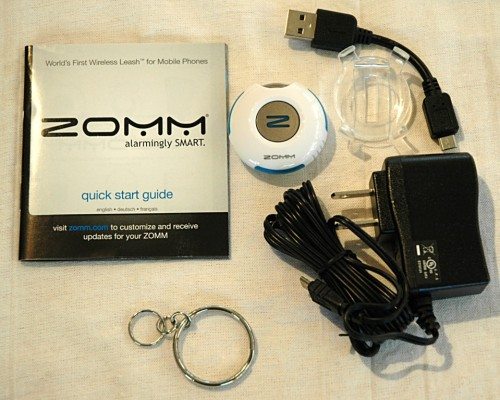
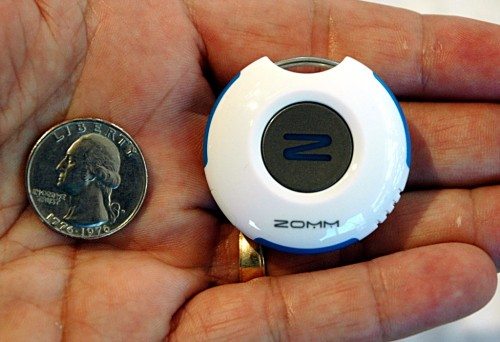
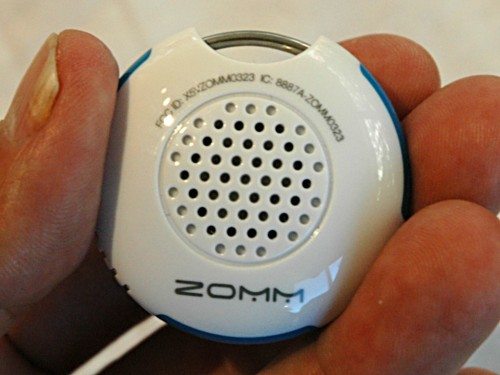
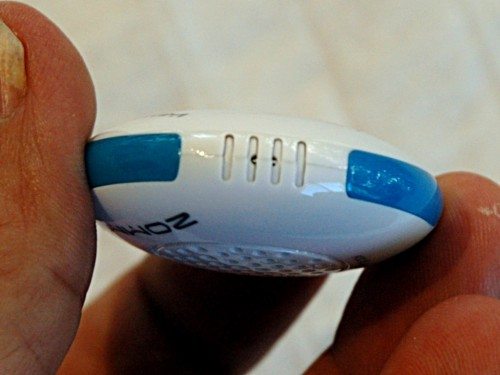

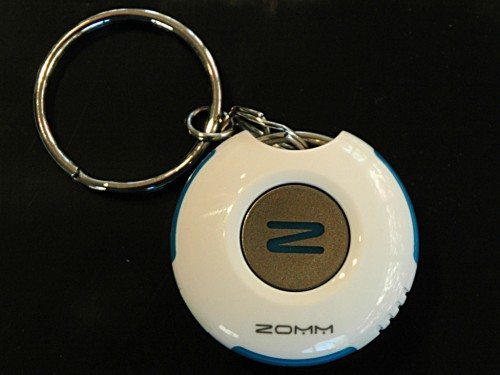
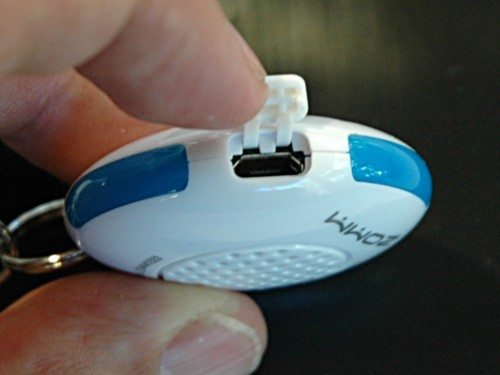
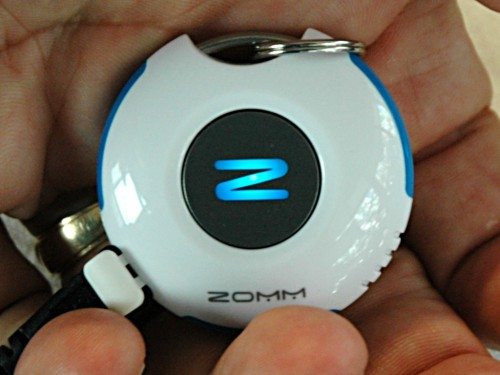
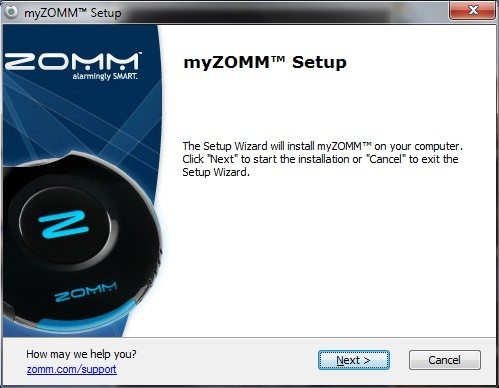
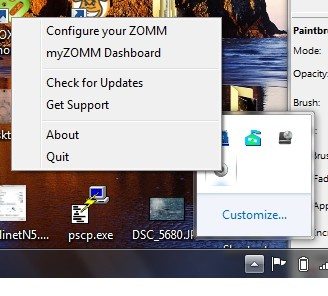
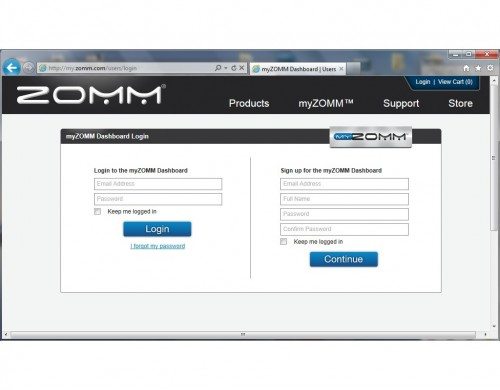
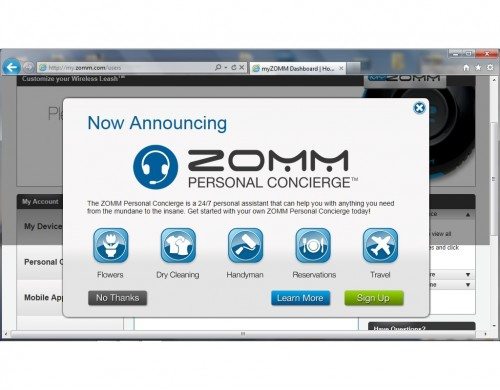
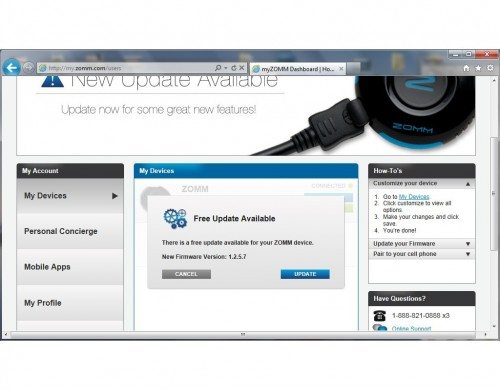
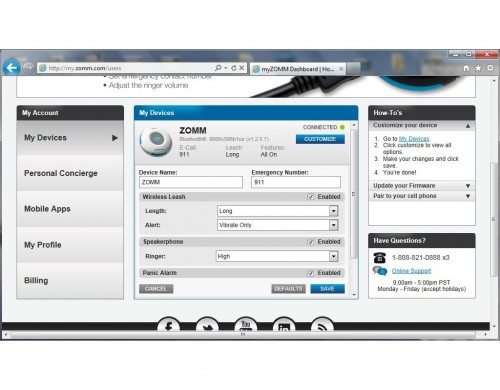
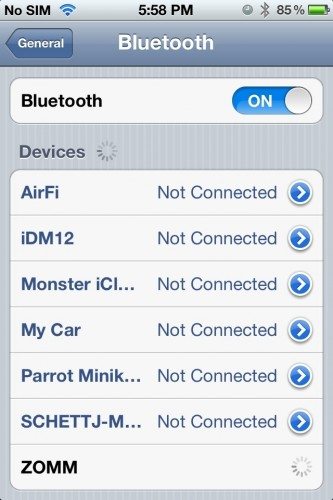
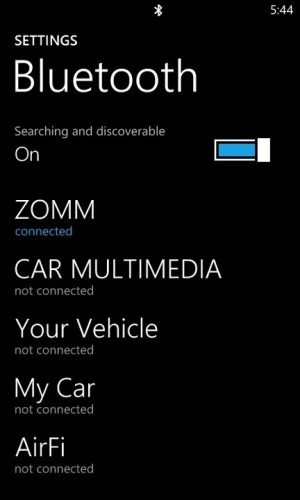
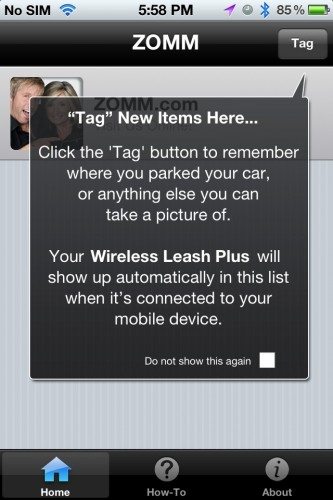
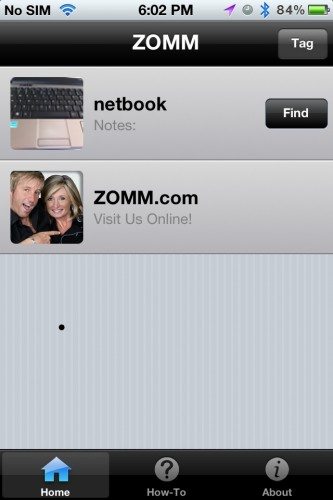
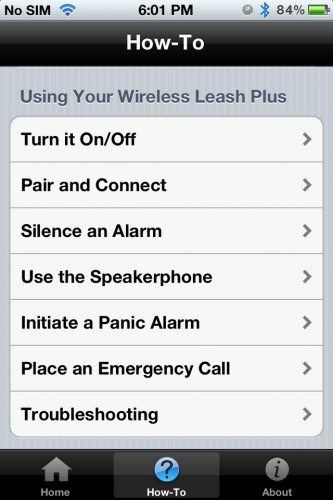


Gadgeteer Comment Policy - Please read before commenting
I just received mine. The app works with the Zomm Plus. I cannot see any difference between the Zomm and the Zomm plus yet it is $20 more. Are they charging $20 for the app??? It works well. I mostly bought as an alert for whem my phone rings. Often times I miss a call because the phone is on vibrate and I did not feel the vibrations. Overall, I am happy with is so far except for the lack of the App with the non-Plus model.